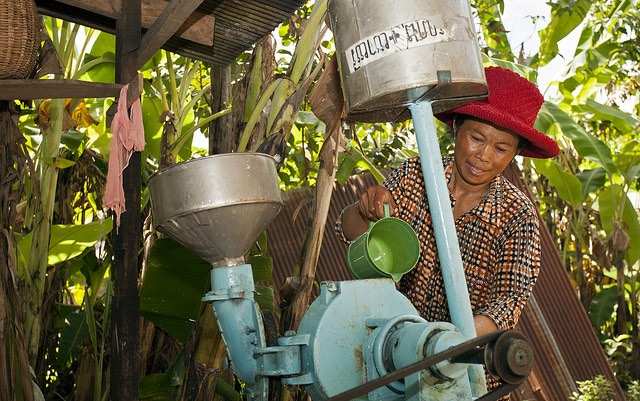Whether there has been sufficient progress in women’s empowerment in agriculture depends on how one defines “sufficient.” The fact that the question is being asked is itself a sign of progress.
A decade ago, women’s empowerment in agriculture wasn’t even on the agenda. People thinking about agricultural policy or programs didn’t think much about their impact on women’s empowerment, and those thinking about women’s empowerment didn’t think much about agriculture. Nor was there any clarity about what was meant by the concept of empowerment—let alone how to measure progress. The indicators often used to proxy women’s empowerment, such as education rates or women’s representation in parliament, were not directly related to agriculture.
Developing tools to measure empowerment
In 2011, USAID, IFPRI and the Oxford Poverty and Human Development Initiative developed the Women’s Empowerment in Agriculture Index (WEAI) to track gender equality and measure empowerment, agency, and women’s inclusion in the agricultural sector. It measures the extent of women’s engagement in agriculture across five domains of empowerment: involvement in productive decision-making, rights over resources, control over income, leadership, and time spent on domestic and productive tasks. The index can also be used to compare women’s empowerment relative to men within the same household.
Measurement alone is not enough, but it can help to prompt and guide action. When project planners know they will be judged by their projects’ impacts on empowerment, they may be more apt to consider factors like whether their intervention will increase or decrease women’s time burdens or control over income. For example, 2012 baseline WEAI data for Bangladesh found that approximately 75 percent of women in the “Feed the Future Zone of Influence” were disempowered—more than any other Feed the Future country that had collected WEAI data at that time.
The Bangladesh Ministry of Agriculture then partnered with Helen Keller International and IFPRI’s policy research and strategy support team to develop and implement a new program called ANGeL (Agriculture, Nutrition, and Gender Linkages). The program aimed to reduce gender inequities at the household level to improve maternal, new born and child health and nutrition, by providing women and men with training in agriculture and nutrition. This was coupled with behavior change communication, which promotes improved nutrition and child feeding practices and behaviors. When WEAI data was again collected in 2015, 13.8 percent more women were defined as empowered—demonstrating that it is possible to see gains in women’s empowerment, when this is prioritized.
Being able to measure women’s empowerment in agriculture has also been helpful in making the case for why women’s empowerment is important. For example, an analysis of WEAI and nutritional data from Ghana revealed that women’s empowerment is associated with the quality of infant and young child feeding practices, and women’s input into credit decisions (a component of empowerment) is positively and significantly correlated with women’s dietary diversity. This evidence suggests that particular domains of empowerment may have different impacts on nutrition.
Assessing impact at the project level
The WEAI has proved useful, but it is designed to be measured using population-based surveys. That limits our ability to say what works for women’s empowerment within the context of specific development interventions. There is a great demand from the international development community for something tailored for the project level, which includes additional indicators, such as mobility and intimate partner violence (to ensure that interventions don’t cause a backlash against women). With support from the Bill and Melinda Gates Foundation and USAID, we are therefore working with 13 agricultural development projects to develop and pilot a Project-level Women’s Empowerment in Agriculture Index (pro-WEAI) for this purpose, which we expect to finalize in 2020.
The draft pro-WEAI, which was piloted by the participating projects, builds on the WEAI methodology. The index includes 12 indicators of women’s empowerment in agriculture: autonomy in income; self-efficacy; attitudes towards intimate partner violence; respect among household members; visiting important locations; work balance; access to financial services and involvement in financial decisions; control over use of income; ownership of land and other assets; input into productive decisions; membership in groups like producer organizations or savings and loan groups; and membership of any other groups that the respondent thinks are influential. Each indicator is organized within a domain: intrinsic agency (power within), instrumental agency (power to), and collective agency (power with). Over the next two years, the projects will use pro-WEAI in endline surveys to examine the impact of their interventions on women’s empowerment and other development outcomes. Ultimately, pro-WEAI will offer development practitioners and researchers another tool to measure women’s empowerment and to identify what strategies work to empower women.
Ruth Meinzen-Dick is a Senior Research Fellow in IFPRI’s Environment and Production Technology Division. This post first appeared on the Technical Centre for Agricultural and Rural Co-operation (CTA) Spore blog.







